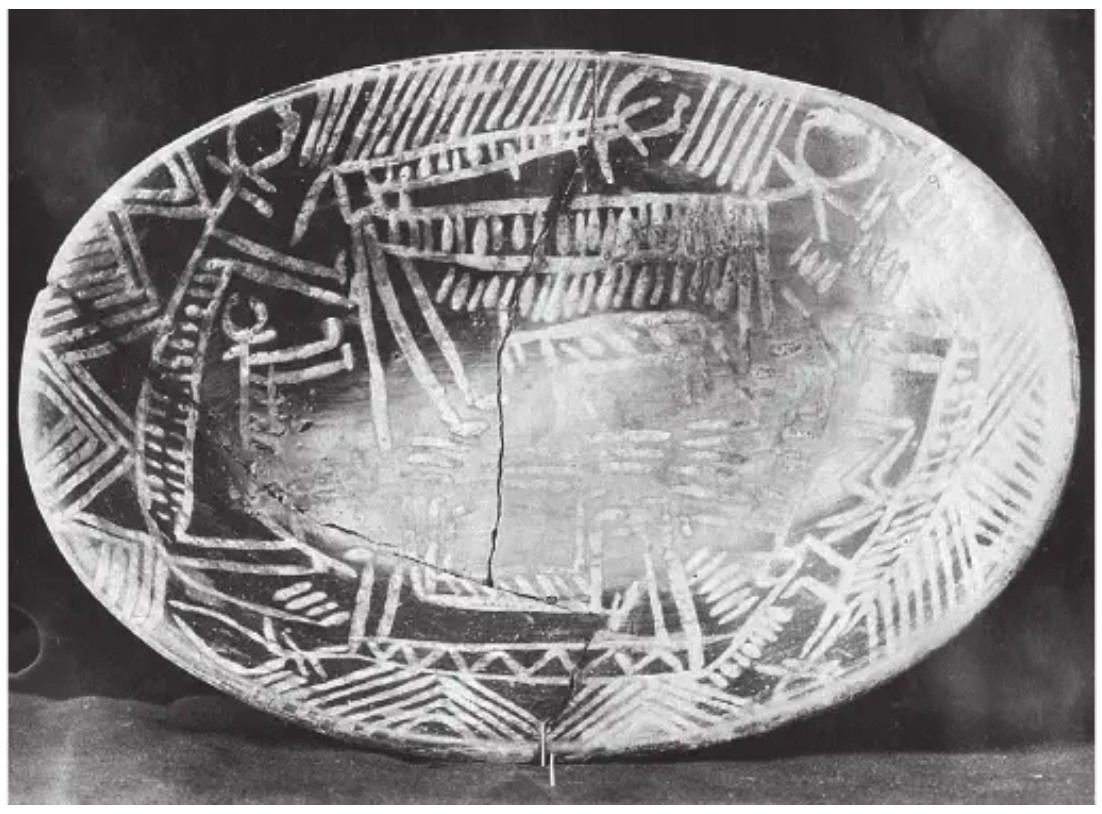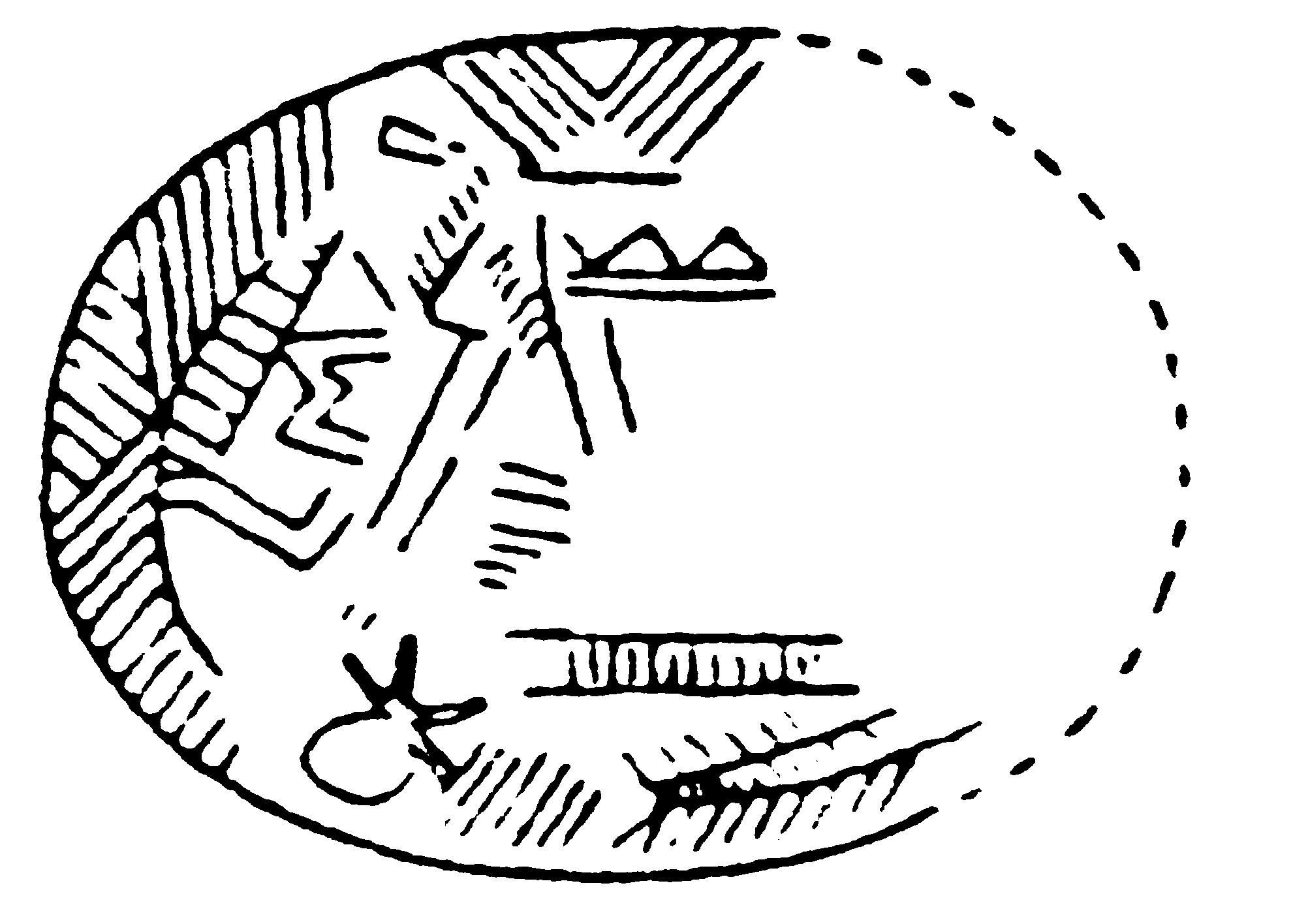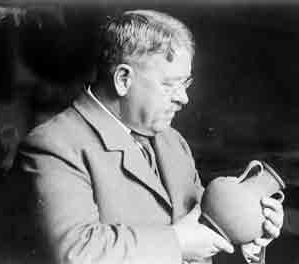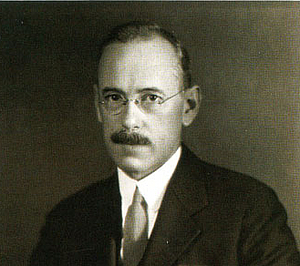C-Ware – elliptical bowl C-0180
By Droux, Xavier
, Tomb 29.
1910 : Harvard University—Boston Museum of Fine Arts expedition.Boston, Museum of Fine Arts, MFA 11.320 (M29/2).
Date : Naqada IA–IIB
General range of C-ware production
Material : Nile silt (Painted)
Preservation : Complete, repaired
Decoration preservation : Good
Decoration
The inside of the bowl is decorated with four large cattle facing toward the right; they are equally placed on opposite sides of the vessel, one at each narrow end and one along each long side. Three of them have a smaller animal depicted between their legs; a double M-shaped zigzag features between the legs of the fourth cattle. An additional cattle is shown above the back of another one. Their silhouettes are extremely schematic, but details allow identification, especially the crescent-shaped horns rising above the heads of the larger cattle and of one of the smaller ones. Their ears are indicated by small straight lines, as are their muzzles. The bodies are thin and elongated, and the legs are shown as straight lines that end in small 'feet'. Their tails are also painted, once with a series of small dots along it.
Two of the small cattle, those painted on the long sides of the bowl, are placed head cattle between the legs of larger ones. They don't appear to have horns and their muzzles may be directed upward, toward the belly of the larger cattle: it is suggeted that they may be suckling calfs, therefore making the two larger animals cows rather than bulls. One of the larger cattle has a series of parallel lines painted along its belly, as if suggesting a mane, which is difficult to explain. The third smaller cattle faces the same direction as the larger cattle above; it might also be a calf, but the horns may suggest otherwise, despite the difference in scale.
The decoration of the rim varies; two downturned triangles filled with chevrons are placed on one of the long side. They connect to the top line of the cattle's back and are truncated. Three short parallel oblique stroke follow, before a gap created by the head of the cattle. The narrow end on that side of the bowl is decorated with four further downturned triangles; the first three are unusually filled partly with downturned triangles and partly with parallel oblique lines, while the fourth triangle is filled with a single chevron. All four triangles connect to the back of the cattle, the head of which creates another gap in the decoration of the rim. Further to the right, the space between the cattle's back and the rim is filled with parallel oblique lines, until the head of the animal creates a gap after which a smaller group of oblique lines are painted, only the rightmost one of which connects to the cattle neck. Finally, the second narrow end of the bowl is wholly filled with three groups of oblique parallel lines.
The rest of the decoration consists of small groups of parallel strokes. Three are placed below cattle tails, the others across the bottom of the bowl.
Dimensions (cm)
4.9
23
16.2
Additional information
Vi 469
Inside





